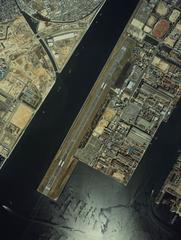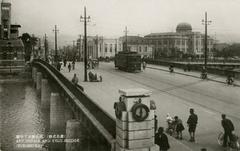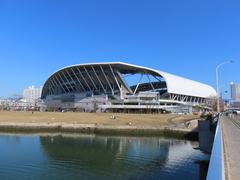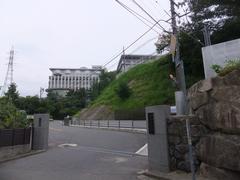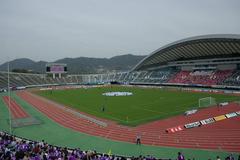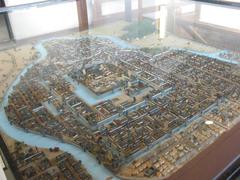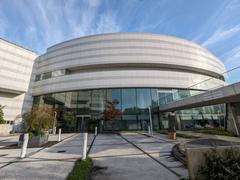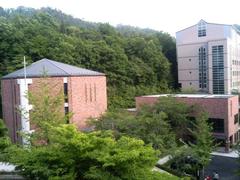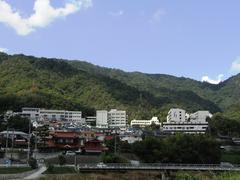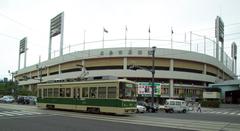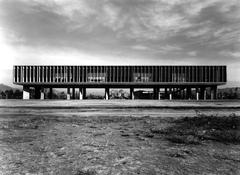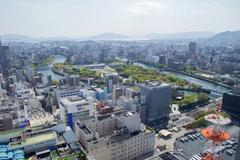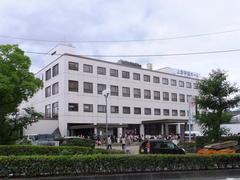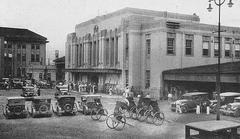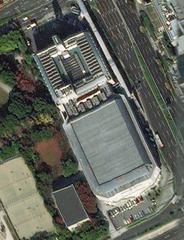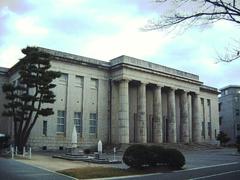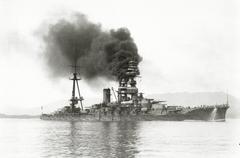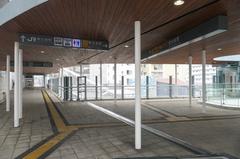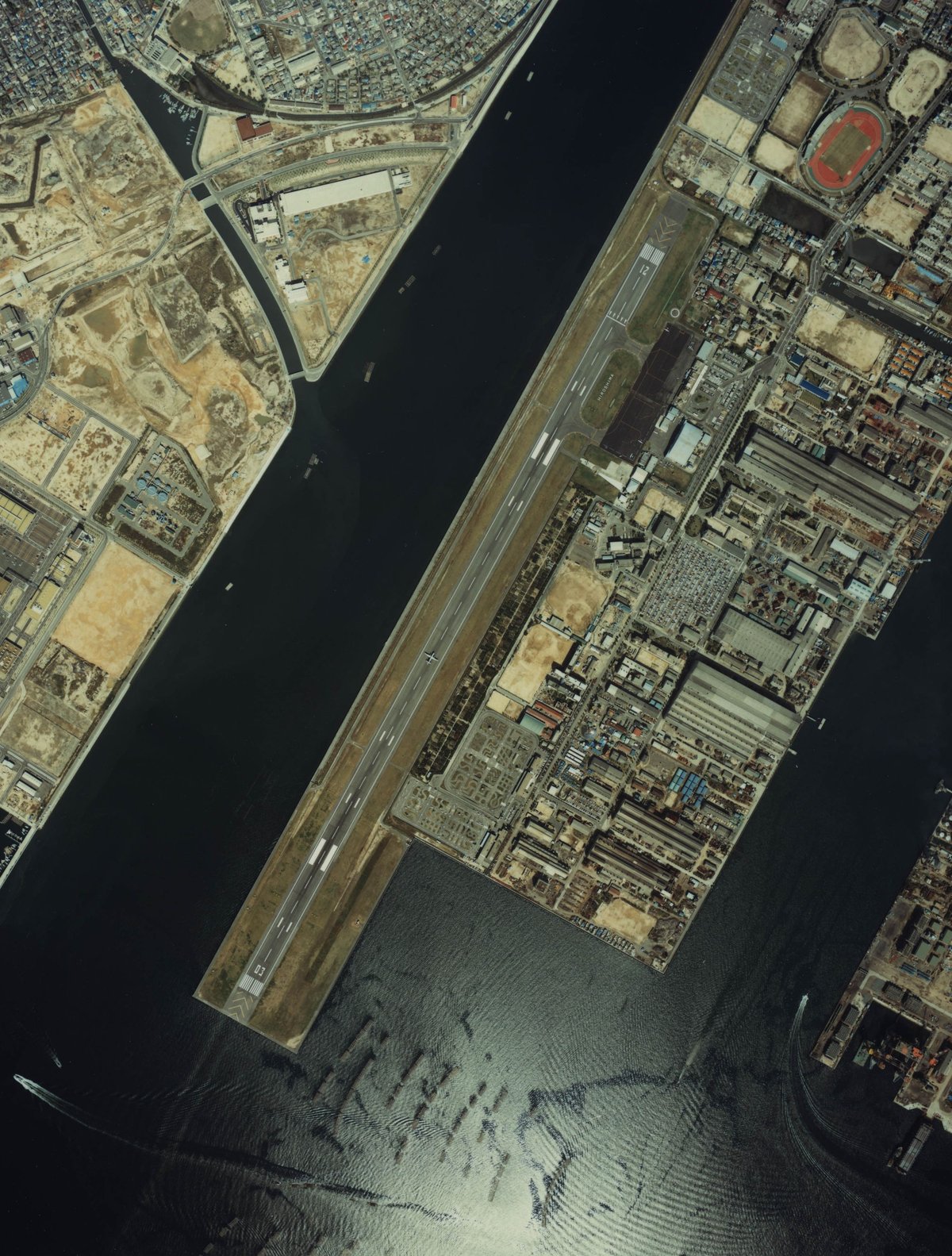
Hiroshima-Nishi Airport Visiting Hours, Tickets, and Travel Guide
Date: 14/06/2025
Introduction
Hiroshima-Nishi Airport, formerly a bustling gateway to the Chugoku region, now serves as a symbol of Hiroshima’s resilience, innovation, and adaptive urban planning. Established in the aftermath of World War II, the airport played a pivotal role in Hiroshima’s rapid postwar recovery, connecting the city to major destinations across Japan. Although fixed-wing commercial flights ceased in 2012, the site has since been repurposed as the Hiroshima Heliport and the Hiroshima Innovation Techno Port, offering new opportunities for industry and community engagement.
This guide delivers detailed insights into Hiroshima-Nishi Airport’s historical evolution, current operational status, visiting guidelines, redevelopment projects, and travel tips. It also highlights must-see attractions nearby, ensuring travelers can make the most of their time in Hiroshima.
For official and up-to-date travel information, please consult the Hiroshima City Official Tourism Site, Wikipedia: Hiroshima Airport, and the Hiroshima Peace Memorial Museum.
Table of Contents
- Introduction
- Airport History and Transition
- Current Status and Visitor Access
- Redevelopment and Community Integration
- Nearby Attractions and Cultural Highlights
- Transportation and Travel Tips
- Accommodation and Local Cuisine
- Seasonal Events and Activities
- Frequently Asked Questions (FAQ)
- Conclusion
- References
Airport History and Transition
From Critical Gateway to Urban Landmark
Originally built as Hiroshima Airport in the postwar era, Hiroshima-Nishi Airport’s strategic waterfront location established it as a key node in Japan’s domestic air network. It connected Hiroshima to major cities—most notably through the busy Hiroshima–Tokyo (Haneda) route—and was instrumental in catalyzing economic growth.
However, by the late 20th century, limitations such as a short runway and increased urban encroachment restricted the airport’s expansion. In 1993, the new Hiroshima Airport opened in Mihara City, offering greater capacity and modern amenities. The original airport was subsequently renamed Hiroshima-Nishi Airport and shifted to a secondary, localized role.
Current Status and Visitor Access
Operational Overview
As of 2012, Hiroshima-Nishi Airport is no longer open to fixed-wing commercial flights. The site now hosts the Hiroshima Heliport, which supports government, emergency, and private helicopter operations, including high-profile events like the G7 Summit (Wikipedia). The heliport is not open for public tours, though it can be viewed from nearby public spaces.
Visiting Hours and Accessibility
- Public Grounds: The airport’s exterior and surrounding areas are generally open during daylight hours. Access to the heliport and former terminal is restricted.
- Heliport Viewing: While direct access is limited, aviation enthusiasts can observe operations from adjacent public areas.
- Tickets: There are no entry fees or ticket requirements, as the airport no longer accommodates commercial passengers.
Directions
- By Bus: Multiple routes connect Hiroshima city center to Nishi Ward. Check local bus schedules.
- By Taxi/Car: About 3–6 km west of city center; the Hiroshima South Road enhances vehicle access.
Redevelopment and Community Integration
Hiroshima Innovation Techno Port
A significant portion of the former airport grounds has been redeveloped as the Hiroshima Innovation Techno Port, an industrial park attracting high-tech companies and logistics providers (Wikipedia). Infrastructure upgrades have fostered economic revitalization and job creation.
Community and Infrastructure
The southern section supports the Hiroshima South Road, improving regional connectivity. The former arrivals hall now houses offices for Sanfrecce Hiroshima, the city’s professional football club, demonstrating creative adaptive reuse.
Heliport Upgrades
The heliport has received modernized facilities and enhanced security, particularly for major international events. It remains vital for emergency medical services and disaster response (Wikipedia).
Nearby Attractions and Cultural Highlights
Hiroshima Peace Memorial Park & Atomic Bomb Dome
A UNESCO World Heritage Site, Hiroshima Peace Memorial Park is just 6 km from the airport. It commemorates the victims of the atomic bombing and advocates for global peace. The Atomic Bomb Dome stands as a stark reminder of Hiroshima’s past.
- Museum Hours: 8:30 AM–6:00 PM (varies by season)
- Admission: 200 JPY adults, free for children under 18
- Facilities: Wheelchair accessible, multilingual guides available
Shukkei-en Garden
Shukkei-en is a historic Japanese garden dating to 1620, renowned for spring cherry blossoms and autumn foliage.
- Hours: 9:00 AM–6:00 PM (last entry 5:30 PM)
- Admission: 260 JPY adults
Hiroshima Prefecture Art Museum
Hiroshima Prefecture Art Museum boasts collections from the Edo period to contemporary art.
- Hours: 9:00 AM–5:00 PM, closed Mondays
- Admission: ~500 JPY (varies by exhibition)
Hondōri Arcade & Okonomimura
The Hondōri Shopping Arcade and Okonomimura food complex are local favorites for shopping and Hiroshima-style okonomiyaki.
Hiroshima City Asa Zoological Park
A family-friendly zoological park (Asa Zoological Park) open 9:00 AM–4:30 PM (closed Mondays), admission 620 JPY adults.
Hiroshima Bay & Miyajima Island
Hiroshima Bay offers waterfront dining and access to scenic boat cruises. Ferries to Miyajima Island depart from Hiroshima Port, providing views of the iconic Itsukushima Shrine.
Onomichi
A picturesque coastal town, Onomichi is easily accessible by train for day trips.
Transportation and Travel Tips
Getting to the City
- Airport Limousine Bus: 20 min to Hiroshima Station, 700 JPY (World of Metro)
- City Bus: ~40 min, 200 JPY
- JR Sanyo Line: 15 min to Hiroshima Station, 210 JPY
- Tram: 30 min, 210 JPY
Accessibility
The airport and major attractions are wheelchair accessible, with English signage common throughout the city. Translation apps can assist with detailed navigation (Trip to Japan).
Accommodation and Local Cuisine
Recommended Hotels
Both are near Hiroshima Station and offer convenient access to city attractions.
Local Food
Don’t miss Hiroshima-style okonomiyaki, fresh oysters, anago (conger eel), and momiji manju (maple-leaf cakes). Okonomimura is the go-to spot for savory pancakes.
Seasonal Events and Activities
Hiroshima’s cultural calendar includes the Hiroshima Flower Festival in May, cherry blossom viewings, and the August 6th Peace Memorial Ceremony. Check event schedules for details.
Cycling is also popular—rentals are available near Kojin Market (Living Nomads), and the city’s flat terrain is ideal for exploration.
Frequently Asked Questions (FAQ)
Q: Can I visit Hiroshima-Nishi Airport today?
A: Public access is limited to exterior areas; heliport facilities are not open for tours.
Q: Are there any ticket requirements?
A: No, there are no ticket requirements for the airport grounds.
Q: Is the airport accessible for those with disabilities?
A: Yes, most public areas and city attractions are wheelchair accessible.
Q: How do I reach the city center?
A: The Limousine Bus is fastest (20 min), but city buses, JR Line, and trams are also available.
Q: Are there guided tours?
A: There are currently no regular tours at the airport, but special events may be announced by local tourism boards.
Conclusion
Hiroshima-Nishi Airport’s transformation from a vital aviation hub to a center for innovation and emergency services exemplifies Hiroshima’s enduring spirit. While commercial flights are no longer available, the airport’s redevelopment and proximity to some of Japan’s most meaningful historical sites make it a point of interest for visitors.
Combine your visit to Hiroshima-Nishi Airport with trips to the Peace Memorial Park, Shukkei-en Garden, and other local attractions for a comprehensive experience of Hiroshima’s history, culture, and innovation.
For the latest updates, event announcements, and travel tips, consult official tourism resources and download the Audiala app. Plan your visit today and immerse yourself in Hiroshima’s remarkable blend of legacy and modernity.
References and Further Reading
- Hiroshima–Nishi Airport, 2025, Wikipedia
- Hiroshima Peace Memorial Museum Official Site
- Hiroshima City Official Tourism Site
- Dive! Hiroshima
- Living Nomads, 2025, Hiroshima Travel Blog
- Trip to Japan, 2025, Complete Guide to Hiroshima
- PlanetWare, 2025, Hiroshima Tourist Attractions
- Hect India, 2025, Hiroshima-Nishi Airport Guide
- ICAROB2025 Conference Proceedings, 2025
- World of Metro
- Japan Experience – Hiroshima
- UNESCO World Heritage Centre: Atomic Bomb Dome
